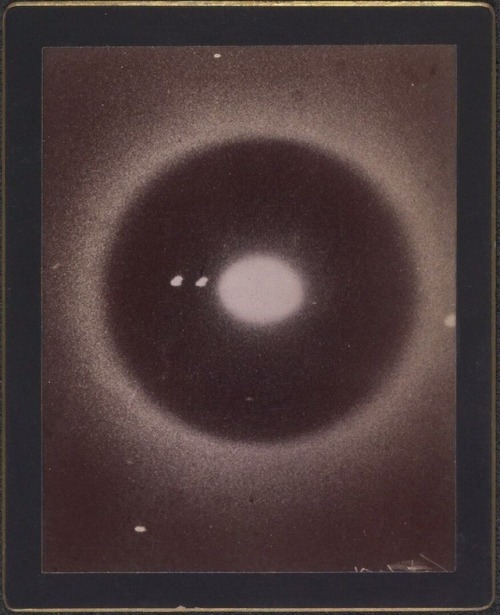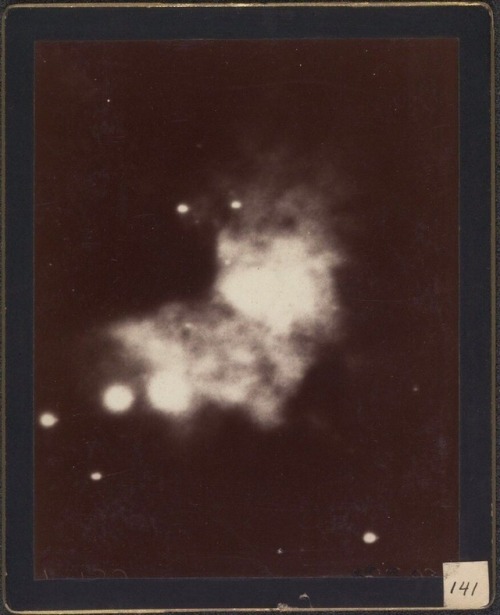Galactic Center By NASA's Marshall Space Flight Center

Galactic Center by NASA's Marshall Space Flight Center
More Posts from Ad-astra-affecte-spe and Others

Did Betelgeuse Swallow a Binary Partner ?
The star hit the news back in late 2019 when it suddenly dimmed in an event known as the great dimming, and since there's been a lot of papers and theories to what really happened.

At the time, there was talk of supernova from a minority, while most astronomers reserved judgement on this, which turned out to be the right call, although even they had to admit bafflement at why this star suddenly become so dim.
Since, then the prevailing and mostly accepted theory is that the star ejected a huge amount of material which included carbon and thus concealed parts of the star, causing the dimming.

A new paper from Department of Physics and Astronomy at Louisiana State University has looked at another idea, that at some point in the recent past the star had consumed a binary partner.
While the study can only make suggestions at this point, some of the observed facts about Betelgeuse certainly fit the bill. The star spins very quickly for an old supersized red giant, even faster than our own sun, and the team believe a past consumption may have transferred energy to the star, accounting for this spin rate.
The next thing was that the super giant star didn't just dim, it rebounded and actually brightened considerably too. These events of material coming to the surface and briefly causing a brightening effect are predicted through models of this occurrence.
The star is not likely to go supernova anytime soon, but I would put bets on the likelihood of the star surprising us once again in the coming decades.







Astronomical photographs, Harvard College Observatory, Cambridge, 1890-1920

Bubble Nebula and the Star Cluster


Comet Leonard


Shadows of Saturn



The Rosetta Nebula and NGC 2244
At the heart of the Rosetta nebula is an open cluster of stars, which is NGC 2244. The entire structure sits at the end of a giant molecular cloud, and you can easily spot the tell tale columns and protostars at the head showing active star formation on-going.
The bottom image is from Chandra, which gives the purple/pink colours for X-Ray sources, used particularly in spotting black hole accretion disks, pulsars and supernova remnants, we can see it's a lively place !
The entire structure is in the constellation of Monoceros at around 5,200 light years from Earth.


A solar eclipse seen from space.

[...] while compartmentalization and replication are important, they are aspects of what life is and does, but they do not address the why of life. The why of life is metabolism. By completing the circuit of life, biology harnesses energy from its environment. Technically speaking, this means that biology actually helps the universe cool faster; it increases the entropy of the universe. This is why the universe needs life.
Alien Oceans by Kevin Peter Hand

Andromeda over the Swiss Alps Image Credit: Dzmitry Kananovich
-
 celestialmantdonna reblogged this · 10 months ago
celestialmantdonna reblogged this · 10 months ago -
 celestialmantdonna liked this · 11 months ago
celestialmantdonna liked this · 11 months ago -
 spaceratprodigy reblogged this · 11 months ago
spaceratprodigy reblogged this · 11 months ago -
 ironifiicd liked this · 1 year ago
ironifiicd liked this · 1 year ago -
 kissedbymischief reblogged this · 1 year ago
kissedbymischief reblogged this · 1 year ago -
 forevermuses reblogged this · 1 year ago
forevermuses reblogged this · 1 year ago -
 gingerfan24 liked this · 1 year ago
gingerfan24 liked this · 1 year ago -
 sebbytheraccoon liked this · 1 year ago
sebbytheraccoon liked this · 1 year ago -
 spaceratprodigy liked this · 1 year ago
spaceratprodigy liked this · 1 year ago -
 oh-nostalgiaa liked this · 1 year ago
oh-nostalgiaa liked this · 1 year ago -
 captastra reblogged this · 1 year ago
captastra reblogged this · 1 year ago -
 sidebysideinsilence reblogged this · 1 year ago
sidebysideinsilence reblogged this · 1 year ago -
 perfectlyimperfectmg liked this · 1 year ago
perfectlyimperfectmg liked this · 1 year ago -
 forevermuses liked this · 1 year ago
forevermuses liked this · 1 year ago -
 paragonrising reblogged this · 1 year ago
paragonrising reblogged this · 1 year ago -
 marcelobel-blog liked this · 1 year ago
marcelobel-blog liked this · 1 year ago -
 the-wine-dark-sea reblogged this · 1 year ago
the-wine-dark-sea reblogged this · 1 year ago -
 spaceexists liked this · 1 year ago
spaceexists liked this · 1 year ago -
 xploseof reblogged this · 1 year ago
xploseof reblogged this · 1 year ago -
 coyote-sings reblogged this · 1 year ago
coyote-sings reblogged this · 1 year ago -
 nasty-black-orchid reblogged this · 1 year ago
nasty-black-orchid reblogged this · 1 year ago -
 halfpoisonhalfgod liked this · 1 year ago
halfpoisonhalfgod liked this · 1 year ago -
 sunshinesrain reblogged this · 1 year ago
sunshinesrain reblogged this · 1 year ago -
 x0valkyrie reblogged this · 1 year ago
x0valkyrie reblogged this · 1 year ago -
 scxtt-sxmmers reblogged this · 1 year ago
scxtt-sxmmers reblogged this · 1 year ago -
 space-samurai-x reblogged this · 1 year ago
space-samurai-x reblogged this · 1 year ago -
 wriedwiredweird liked this · 1 year ago
wriedwiredweird liked this · 1 year ago -
 carlstinskoffi liked this · 1 year ago
carlstinskoffi liked this · 1 year ago -
 knuckl3-velvet liked this · 1 year ago
knuckl3-velvet liked this · 1 year ago -
 celestiallysiren liked this · 1 year ago
celestiallysiren liked this · 1 year ago -
 majaaaaaaaaaa-with-10-as liked this · 1 year ago
majaaaaaaaaaa-with-10-as liked this · 1 year ago -
 beardedmrbean reblogged this · 1 year ago
beardedmrbean reblogged this · 1 year ago -
 sarajosulli liked this · 1 year ago
sarajosulli liked this · 1 year ago -
 automaticdestinytrash reblogged this · 1 year ago
automaticdestinytrash reblogged this · 1 year ago -
 and-claudia liked this · 1 year ago
and-claudia liked this · 1 year ago -
 eternitysnake liked this · 1 year ago
eternitysnake liked this · 1 year ago -
 gaignunkukai reblogged this · 1 year ago
gaignunkukai reblogged this · 1 year ago -
 gaignunkukai liked this · 1 year ago
gaignunkukai liked this · 1 year ago -
 n1ghtw1ng-scp reblogged this · 1 year ago
n1ghtw1ng-scp reblogged this · 1 year ago -
 the-yearning-astronaut reblogged this · 1 year ago
the-yearning-astronaut reblogged this · 1 year ago -
 zynxxxxxx liked this · 1 year ago
zynxxxxxx liked this · 1 year ago

★•Astronomy, Physics, and Aerospace•★ Original and Reblogged Content curated by a NASA Solar System Ambassador
204 posts